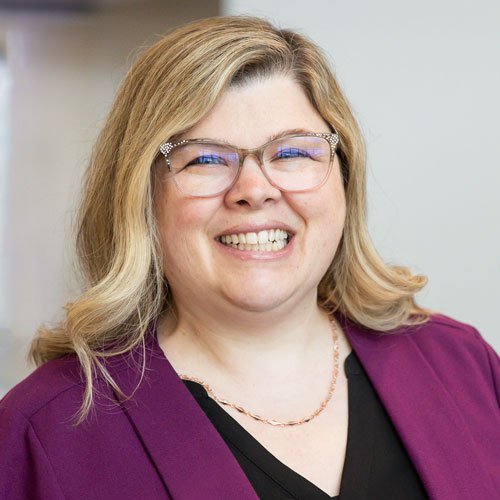newsletter
Sign up for the Marketer QuickLook Newsletter
SMPS Headquarters
625 North Washington Street
Suite 302
Alexandria, VA
22314-1936
email
info@smps.org
phone
703.549.6117




By Janet Lively McCauley, CPSM, Assoc. AIA, and Joy Woo, FSMPS, CPSM, LEED AP
SMPS Foundation Insights for SMPS Professionals
Navigating the Tides of Growth and Contraction in A/E/C Industries
Navigating the Tides of Growth and Contraction in A/E/C Industries
By Janet Lively McCauley, CPSM, Assoc. AIA, and Joy Woo, FSMPS, CPSM, LEED AP
The architectural, engineering, and construction (A/E/C) industries form a dynamic ecosystem characterized by periods of expansion and contraction. As professionals in this space, it’s imperative to understand the underlying trends shaping our industry. Let’s explore each aspect in detail:
1. Growth: Seize Opportunities
Mergers and Acquisitions (M&A): In recent years, A/E/C experienced a surge in M&A activity. This activity may have involved some of the largest A/E/C firms, combining, geography and services with several acquisitions, or a single acquisition. These M&As allow the merged or acquiring firms to access new markets, complementary services, and specialized expertise to drive growth and competitive advantage. Regardless of the magnitude, firms and their staffs experience change. Zweig reports the first half of 2024 compared to 2022 has been highly active with 311 closed A/E/C transactions and a large uptick in buying activity from private equity. The states and markets experiencing the most buyer demand are those receiving the largest amount of financial support via the IIJA bill.1
Private Equity: These firms are increasingly active players in the A/E/C industries, injecting capital and fueling expansion initiatives. Private equity firms can provide A/E/C with financial resources, operational expertise, and strategic guidance to accelerate growth and scale operations. These investments can support growth while exposing the firm’s staff to new processes, procedures, and financial-performance expectations.
Organic Growth: While M&A and private equity investments dominate headlines, organic growth remains fundamental to the continued success of A/E/C. Expanding geographically, diversifying service offerings, and attracting and retaining talent are key strategies for sustainable growth. According to multiple sources, including Oregon State University2 and McKinsey3, nearly 80% of A/E/C executives prioritize organic growth initiatives, such as investing in technology, innovation, and talent development, to drive long-term value creation. Organic growth is often the least disruptive trend discussed; however, even organic growth requires change.
2. Contraction: Navigate Challenges
Loss of Key Clients or Contracts: Like other industries, A/E/C firms are vulnerable to fluctuations in client demand and project pipelines. Losing a key client or contract can significantly impact revenue and profitability and potentially tarnish a brand. Many A/E/C firm leaders recognize client turnover as a major challenge that affects business stability. To mitigate this risk, firms must diversify their client base, nurture client relationships, and deliver exceptional value. For SMPS professionals, this challenge can impact business development and marketing budgets, labor, and expenses as the firm determines how best to fill the gap caused by the loss.
Economic Factors: Economic downturns, market volatility, and regulatory changes can exert pressure on A/E/C firms. The COVID-19 pandemic highlighted the industry’s susceptibility to economic shocks, with project delays, cancellations, and supply-chain disruptions affecting profitability. According to a Building Design + Construction report, the A/E/C sector experienced a 12% decline in revenue in 2020 due to pandemic-related disruptions.4 To weather economic uncertainties, firms must maintain financial resilience, diversify revenue streams, and adopt agile business models.
Poor Leadership/Management: Ineffective leadership and management practices can undermine organizational performance and precipitate contraction. Research by McKinsey & Company identifies poor project management, inadequate risk management, and lack of strategic vision as common pitfalls for A/E/C firms.5 Developing strong leadership competencies, fostering a culture of innovation, and investing in continuous professional development is essential for navigating turbulent times and fostering organizational resilience. Further, succession planning is a critical factor in a firm’s ability to remain relevant and ensure continued success.
As A/E/C professionals, these expansions and contractions can be both energizing and daunting, and everything in between. Below are some strategies for navigating these changing tides.
Proactive Strategies: Build Resilience
Know Your Brand: A strong brand identity sets A/E/C firms apart in a competitive marketplace. Understanding your firm’s unique value proposition, market positioning, and brand promise is critical for attracting and retaining clients, talent, and investment. According to a survey by Edelman, 73% of clients prioritize brand reputation when selecting A/E/C partners.6 Aligning your brand with market trends, client preferences, and industry standards enhances visibility, credibility, and long-term success. Further, developing and knowing your brand—passion, values, and priorities—provides a method for assessing how you choose to meet changes in your firm.
Be Willing to Evolve: Change is inevitable in the A/E/C industries, and firms must adapt to evolving market dynamics and client expectations. Embracing innovation, leveraging technology, and fostering a culture of continuous improvement is essential for staying ahead of the curve. Research by Gartner indicates that 84% of A/E/C firms are investing in digital-transformation initiatives to enhance operational efficiency, project delivery, and client engagement.7 By embracing change and proactively innovating, firms can future-proof their businesses and drive sustainable growth. As individuals, we can evolve by staying current with technology and surrounding ourselves with others who can support us in riding these technology waves. We can also provide value with a willingness to fill gaps, for example, by helping HR with communications during a merger or supporting IT in communicating a new software rollout.
Self-awareness: Understanding your strengths, weaknesses, and goals is crucial for professional and personal development. Whether you thrive in fast-paced environments, enjoy creative problem-solving, or excel in collaborative settings, self-awareness enables you to make informed decisions, set realistic goals, and cultivate a fulfilling career path. Building and maintaining your professional and personal support system is extremely important in times of change. SMPS has many resources that can provide this support.
Seeking Support: Leverage Peer Networks
Mentorship: Mentorship is a valuable resource for career development, skill enhancement, and leadership growth. Engaging with experienced mentors provides insight, guidance, and networking opportunities to navigate career transitions, overcome challenges, and achieve professional goals. According to a Harvard Business Review article, 75% of executives credit mentorship for their career advancement and leadership development.8 Establishing meaningful mentorship relationships fosters knowledge sharing, collaboration, and professional growth within the industry. Most SMPS chapters and many A/E/C firms provide mentoring programs.
SMPS Fellows: The SMPS Fellows program recognizes accomplished professionals who have significantly contributed to A/E/C industries. Leveraging the expertise and insights of SMPS Fellows provides valuable perspectives, best practices, and thought leadership to address industry challenges and drive innovation. Engaging with SMPS Fellows through mentorships, networking events, and educational programs enriches professional development, fosters collaboration, and strengthens the A/E/C community. A roster of SMPS Fellows is available here.
CPSM Certification: The Certified Professional Services Marketer (CPSM) certification is a recognized credential for A/E/C marketing professionals who demonstrate proficiency in marketing strategy, business development, and client engagement. CPSM certification enhances credibility, expertise, and career-advancement opportunities in the A/E/C industries. According to SMPS data, CPSM-certified professionals earn 23% higher salaries and are likelier to advance into leadership roles within their organizations. Investing in CPSM certification equips professionals with the skills, knowledge, and networks to excel in a competitive marketplace. Consider certification and/or connecting with a CPSM in your career journey. For more information about the CPSM Program, click here.
SMPS Network: The SMPS network provides a valuable platform for A/E/C professionals to connect, collaborate, and exchange insights with peers across the industry. Engaging with the SMPS community through local chapters, conferences, and online forums facilitates knowledge sharing, best practices, and professional development opportunities. According to a survey by SMPS, 89% of members cite networking as the most valuable aspect of their SMPS membership, enabling them to build relationships, expand their professional networks, and stay informed about industry trends and opportunities. You can connect with the network online through your local chapter, regional conferences, topic-specific conferences, and/or the Amplify A|E|C Conference.
Foundation Research Resources: The SMPS Foundation researches emerging trends, best practices, and industry benchmarks to inform A/E/C professionals’ decision-making and strategic planning. Accessing research resources, reports, and papers published by the SMPS Foundation provides valuable insights, data-driven analysis, and actionable recommendations to navigate industry challenges and capitalize on growth opportunities. Leveraging Foundation research resources empowers A/E/C professionals to make informed decisions, drive innovation, and stay ahead of the competition. SMPS Foundation resources can be accessed through the SMPS website once members log in. Click here for more information about the Foundation. And donate today.
With the A/E/C industries in a continued state of flux, it’s imperative to remain informed, proactive, and collaborative. By understanding the drivers of growth and contraction, embracing proactive strategies, and leveraging the support of peer networks, we can navigate the challenges and opportunities shaping our industry.
1 https://zweiggroup.com/blogs/news/m-a-activity-report-for-q2-2023
2 https://open.oregonstate.education/strategicmarketing/chapter/chapter-4-strategy-and-strategic-planning/
3 https://www.mckinsey.com/capabilities/growth-marketing-and-sales/our-insights/choosing-to-grow-the-leaders-blueprint
4 https://www.bdcnetwork.com/covid-19-and-real-estate-how-coronavirus-impacting-aec-industry#:~:text=%22U.S.%20construction%20costs%20are%20expected%20to%20decline%202%25%20to%205%25%20on%20average%20in%202020%2C%20a%20major%20twist%20from%20the%20escalating%20prices%20recorded%20in%20the%20years%20leading%20up%20to%20the%20
5 https://www.mckinsey.com/capabilities/risk-and-resilience/our-insights/the-future-of-operational-risk-management-in-financial-services
6 https://www.edelman.com/trust/trust-barometer
7 https://www.gartner.com/en/newsroom/press-releases/2024-02-05-gartner-identifies-top-trends-impacting-technology-providers-in-2024
8 https://hbr.org/2023/06/a-better-approach-to-mentorship

Janet Lively McCauley, CPSM is the 2023-2024 SMPS Foundation President and the Vice President Business Development, Healthcare at ERDMAN.
Connect with Janet on

Joy Woo, FSMPS, CPSM, LEED AP, is senior director, Urban Land Institute (ULI), San Francisco, and a certified life coach.
Connect with Joy on
READ NEXT


















